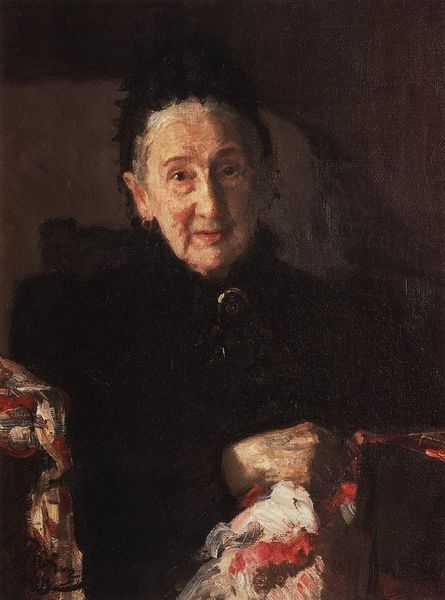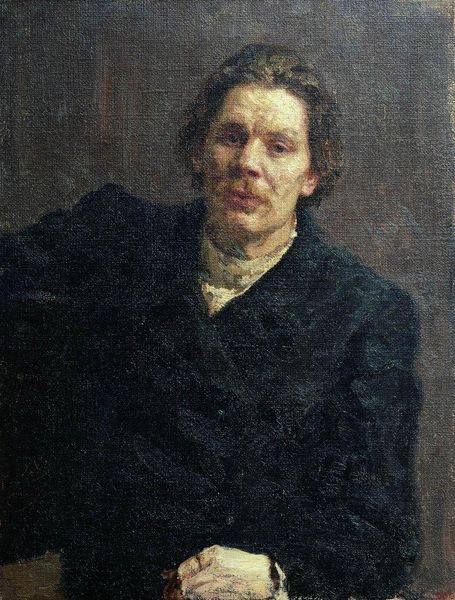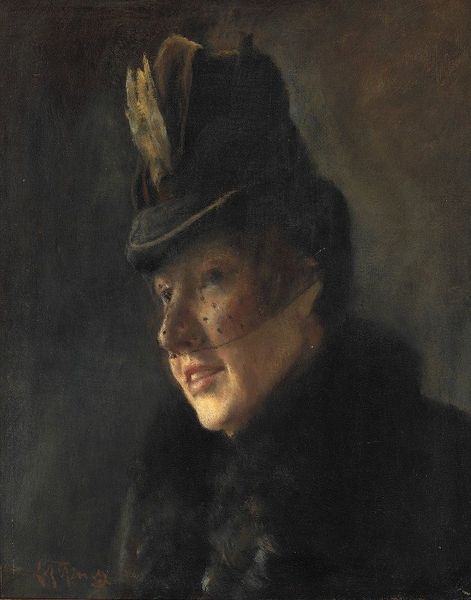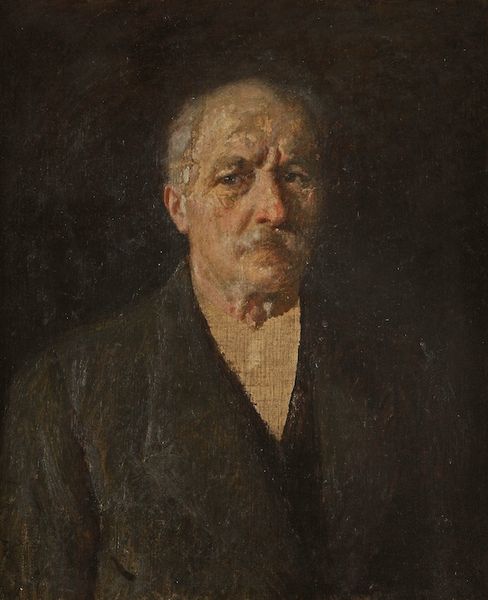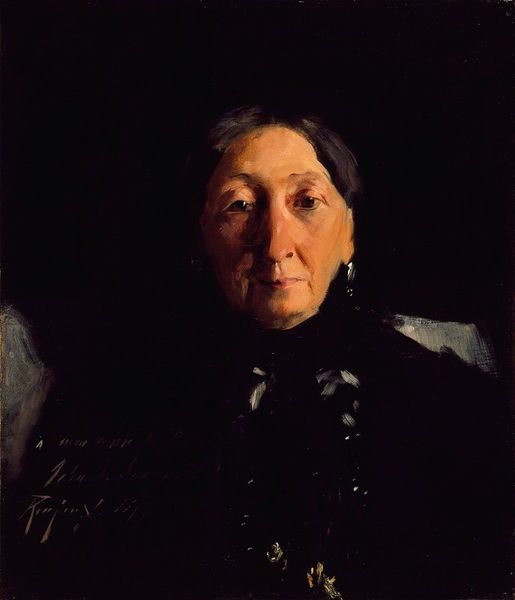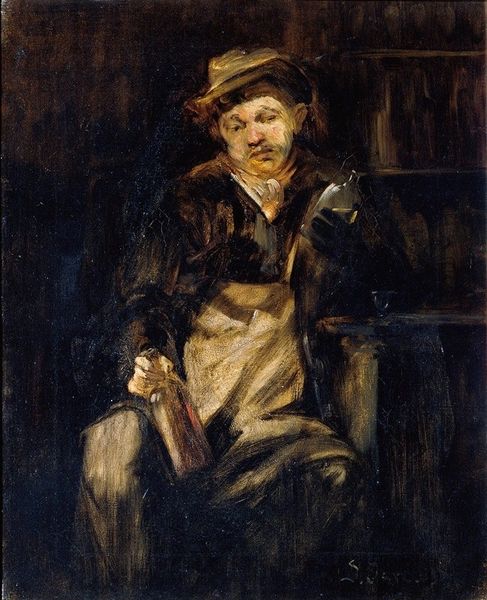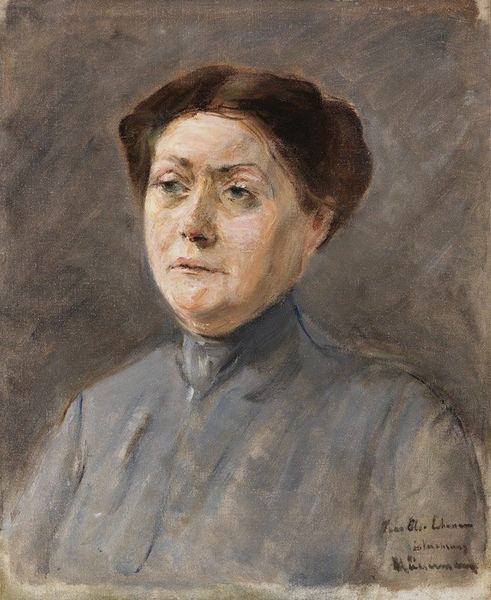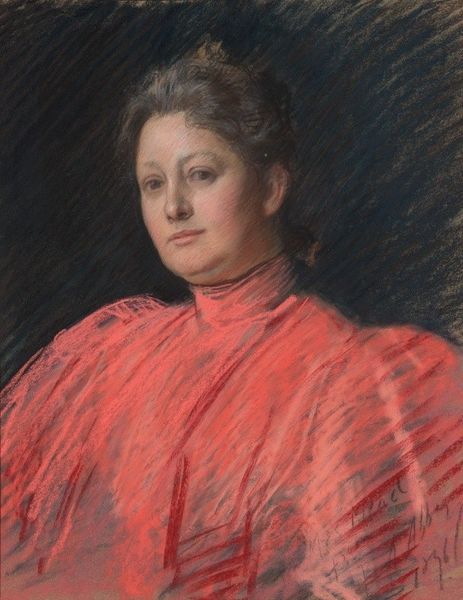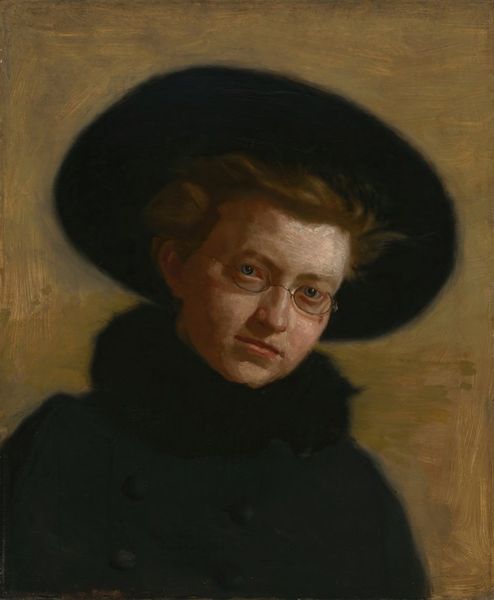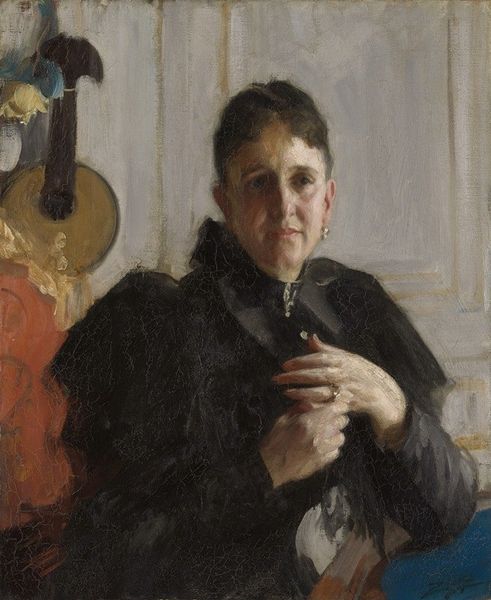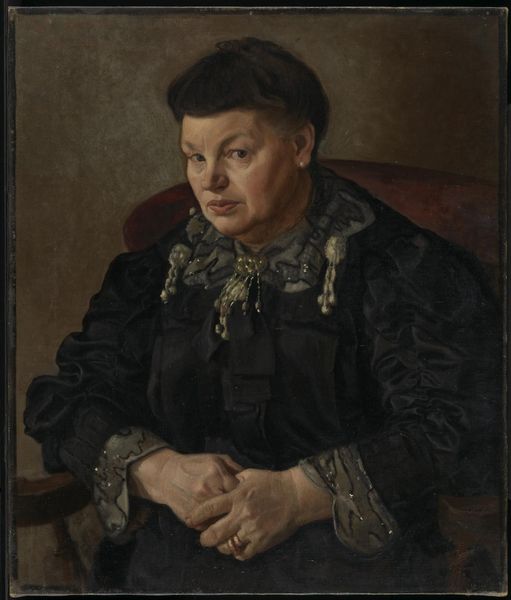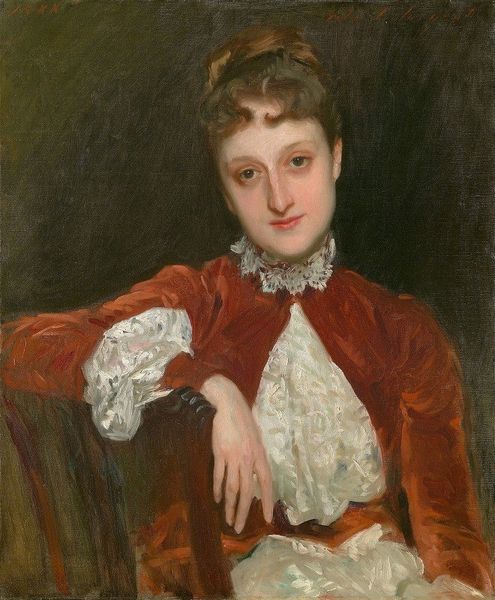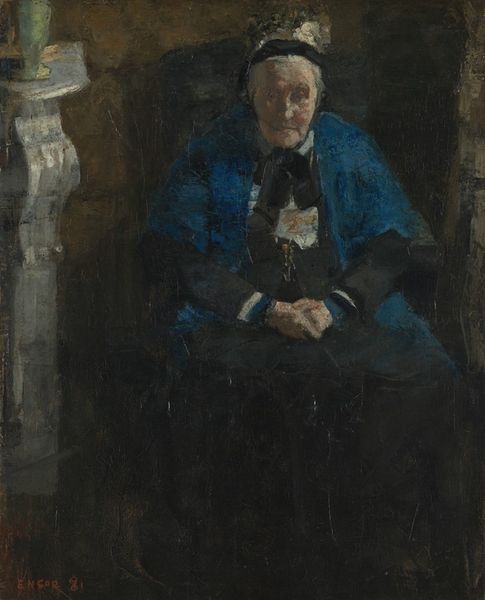
Copyright: Public Domain: Artvee
Curator: Looking at this "Portrait Study of a Man" by Anders Zorn, completed in 1901, the immediate sense is one of subdued formality. Editor: Subdued is right. The dark palette, the figure's pose with crossed arms, there's a certain air of guardedness about him. Who was this person? And what statement was Zorn trying to make about masculinity at the turn of the century? Curator: It's tempting to see this as a commentary on bourgeois masculinity, considering Zorn's reputation and clientele. The confident posture, the carefully painted details of the coat—these point to a certain level of comfort and status afforded to men. Think about the socio-economic structure that created the means for portraits like these. Editor: Right. And that cigarette, so casually held. Is that a statement of liberation, privilege, or both? Considering the context, it reflects the rise of tobacco as a marketed, consumed item, and who has access. I'm more interested in how it represents a shift in social acceptability of vices. Curator: Agreed, the material context here is also about access to pleasurable—though ultimately damaging—goods. The quick brushstrokes, especially around the edges of the face and clothing, suggests a departure from formal academic painting towards something more... immediate and lived-in. A move influenced by impressionism’s focus on momentary experience. How do you see the use of oil paint furthering or hindering this? Editor: I think Zorn does an excellent job using oil paint to show both precision and spontaneity. Look at how he blends light and shadow, or how he defines a space. But how is it contributing to shaping identities or power structures within his work? And let’s not forget the context; oil paint was more readily available in Europe due to trade practices that benefited wealthy nations by controlling access to global resources, even the substances with which art could be created. Curator: Absolutely, we must be mindful of material origins and markets. What intrigues me further is the seemingly unfinished nature, offering insight into Zorn's working method—his rapid execution, capturing light and form economically. Editor: It also highlights a certain social hierarchy –the ability to capture a subject quickly implies that Zorn, like many privileged white men, could seize both opportunity and authority through swift artistic or economic action, a capability influenced by their social standing. In my perspective, every portrait becomes more meaningful once seen through an intersectional framework. Curator: It certainly gives depth. Considering it is called a 'Study,' viewing the artistic production process through this social, economic, and cultural landscape, paints, quite literally, a rich story. Editor: Precisely! Art doesn't just exist; it emerges, entangled with broader systems of labor, trade, and privilege. That kind of approach truly changes how we engage with the work of someone like Zorn.
Comments
No comments
Be the first to comment and join the conversation on the ultimate creative platform.
